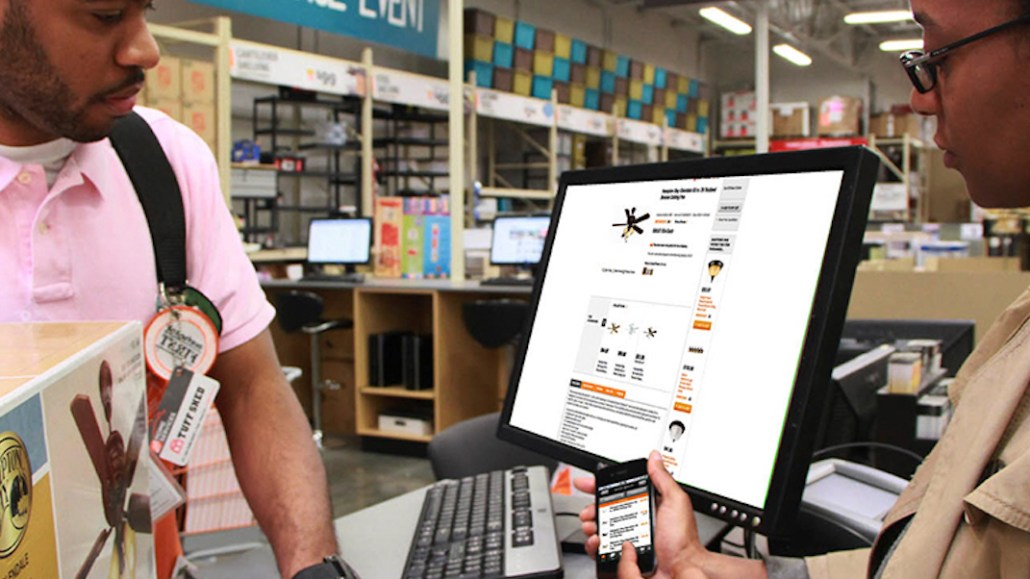
Subscribe here to get the retail briefing in your inbox every week.
Retailers are facing a turning point: Sharpen up your data chops, or drop out.
As customers command more influence in retailers’ decision making today, these companies have to increasingly up the ante in order to succeed. Tools that were considered the business of tech startups not long ago, like AI, are now edging toward table stakes as retailers look to build out roadmaps that are shaped by customer demand. At NRF’s Shop.org conference in Las Vegas last week, conversation, both onstage and off, surrounded “smarter retail” strategies and tactics, including personalization, machine learning, predictive inventory buying, offline and online data analysis, responsive design processes and supply chains, localization and more.
“Retail isn’t dead. Bad retail is dead,” said CVS Pharmacy president Kevin Hourican onstage on Friday. Hourican laid out how every new development made at CVS is in some way in response to what customers have told the retailer they wanted. To turn analysis into action, CVS has mined data touch points, like how people flow through a store, what they’re buying in physical locations, and what they’re ordering through the mobile app. A few recent changes to CVS’s business include a new beauty department, next-day and same-day delivery and a push to make pharmacy processes more efficient with partner Aetna.
During the course of the show, other retail executives echoed the sentiment that the only way to win is tap into what customers want, and be able to respond to it. Miki Racine Berardelli, the CEO of Kidbox, said that data guides the design process for the subscription box company’s private brands, in order to reflect what its customers have asked for in reviews and returns. Etsy uses machine learning to match its 35 million customers with the sellers, from the company’s pool of 2 million, that they’re most likely to purchase from. Home Depot also uses machine learning to predict inventory needs and optimize delivery times to meet demand.
If the attendees in the room couldn’t see the writing on the wall – that head-in-the-sand retail strategies are a modern-day death warrant – Google’s managing director of retail hammered the point home.
“Personalization is nothing but translating information into assistance,” said Kiran Mani on the conference’s second day. “Over the next few years, $800 billion in sales will shift to e-retailers that use site personalization, and away from those that don’t.”
In case retailers weren’t feeling it yet: Pressure’s on.
Overheard
“The way to ensure success in retail today is to be tech-first, and then closely aligning online and offline channels. It comes down to how you manage your inventory, your channel attribution, how you think about in-store analytics. Technology is a much more integral part of the business when it comes to building brand and product today, and it’s a lot harder to insert that sort of technology backbone into a company that’s multi-billion dollars in, by way of a very different type of retail.” — Graham Brown, partner at Lerer Hippeau
What we’ve covered
Customers are willing to pay more for sustainable products — and brands are betting on blockchain to make that happen. The technology, best known for underpinning bitcoin, is being used by brands to develop a shared electronic record that tracks a product’s origins from farms, factories and across transportation routes to the store.
DTC brand Rothy’s first store is not just selling shoes, but also testing marketing tactics. Store-exclusive shoe drops occur about every three weeks, only promoted by an email sent to local customers and a notice that appears in the window of the shop. Now, the company is looking at other ways it can bring the surprise-and-delight tactic to other channels, particularly Instagram.
The outlet mall may soon be Amazonified. Brands are moving one step closer to shedding their reluctance to sell on the platform. J. Crew, for example, recently rolled out an Amazon store for its lower-priced Mercantile label in a move that marked a shift away from a previous reluctance to do so.
By the numbers
In the world of retail, the holiday shopping season is already top of mind. NetElixir, a retail search marketing agency, released its 2018 holiday forecast this week. Highlights are below.
15 percent — The predicted growth for e-commerce holiday purchases this year, up from a 13 percent jump last year.
40 percent — The share of holiday sales that Amazon will take in 2018, up from 35 percent in 2017. Forty percent of holiday sales is equal to $38.8 billion. All other retailers can expect to see a $3.6 billion increase in holiday e-commerce sales.
42 percent — The share of e-commerce sales that will be made via mobile devices this year. Thirty percent of mobile commerce searches are expected to be voice activated.
More in Marketing

Meta’s Threads expected to have ads this year
The move would make Threads Meta’s latest bit of ad real estate venue just over a year after its launch.

Mobile esports reaches new heights in 2024 with a boost from Saudi Arabian investment
Mobile esports activity has been picking up gradually since 2021, but 2024 could be one of the most lucrative years yet for the esports teams and players participating in popular mobile games such as “PUBG Mobile” and “Mobile Legends: Bang Bang” (MLBB).

Q1 ad rundown: there’s cautious optimism amid impending changes
The outlook for the rest of the year is a tale of two realities.








